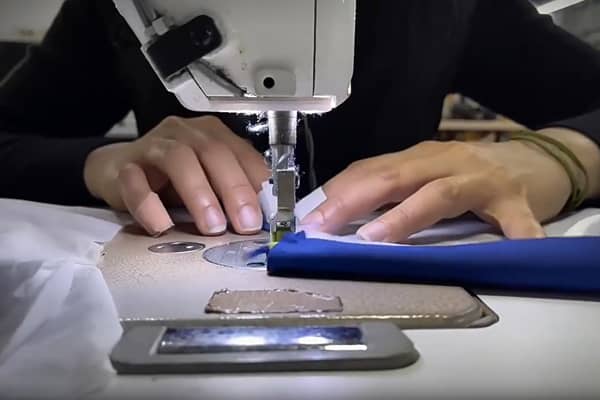Quick Decision Matrix: Manufacturer Selection at a Glance
| Manufacturer Type | Best For | Lead Time | MOQ Range | Cost Level |
|---|---|---|---|---|
| OEM | High-volume standard products | 8-12 weeks | 500-2,000 units | Lowest |
| ODM | Custom designs with flexibility | 12-16 weeks | 300-1,000 units | Medium |
| Custom/ETO | Specialized premium products | 18-26 weeks | 50-200 units | Highest |
🎯 Key Takeaway
Choosing the right equestrian manufacturer depends on three critical factors: your product complexity, order volume, and timeline flexibility. Furthermore, as the market grows toward USD 3.8 billion by 2034, selecting a manufacturer who can scale with innovation becomes essential for long-term success.
Selecting an equestrian manufacturer can make or break your brand's success. With the global equestrian market experiencing unprecedented growth, making the right choice has never been more crucial. This comprehensive guide walks you through every step of how to choose the right equestrian manufacturer for your brand.
Market Insight: According to industry reports, the equestrian market is projected to reach USD 3.8 billion by 2034, driven by rising participation and global demand for advanced rider and horse products. This growth makes supplier selection critical for differentiation and profitability.
Start With Your Brand Needs First
Define Your Product Category and Complexity
Before exploring manufacturers, you need to clearly understand what you're creating. Are you developing premium riding apparel, basic horse protection gear, or specialized safety equipment? Each category requires different manufacturing expertise.
Start by categorizing your products into these main groups:
- Rider Apparel: Breeches, jackets, and base layers requiring precise fit and performance fabrics
- Safety Products: Helmets and body protectors needing strict safety certifications
- Horse Equipment: Saddle pads, blankets, and protective gear requiring durability
- Accessories: Gloves, bags, and smaller items with customization needs
Assess Your Budget and Volume Expectations
Your budget directly impacts which manufacturers you can work with. Most equestrian manufacturers work with these general cost structures:
Raw materials typically account for 40-60% of your total manufacturing cost. Labor makes up another 20-30%, while overhead and logistics round out the remaining expenses. Additionally, remember that sample costs often run 10-20 times higher than bulk production prices.
"Understand the buyer's journey—not just the market. Equine professionals in the US make decisions differently than those in Europe or the Asia Pacific," advises Jutta Putz, equine market strategist.
Determine Your Timeline and Launch Schedule
Timing is everything in the equestrian industry. Competition seasons, holiday shopping, and weather patterns all influence when your products need to hit the market. Moreover, you'll need to work backward from your launch date to determine manufacturer requirements.
Consider these typical timeline factors:
- Sample development: 2-4 weeks
- Revisions and approvals: 1-2 weeks
- Bulk production: 8-26 weeks depending on complexity
- Shipping and customs: 2-6 weeks
- Distribution and retail prep: 1-2 weeks
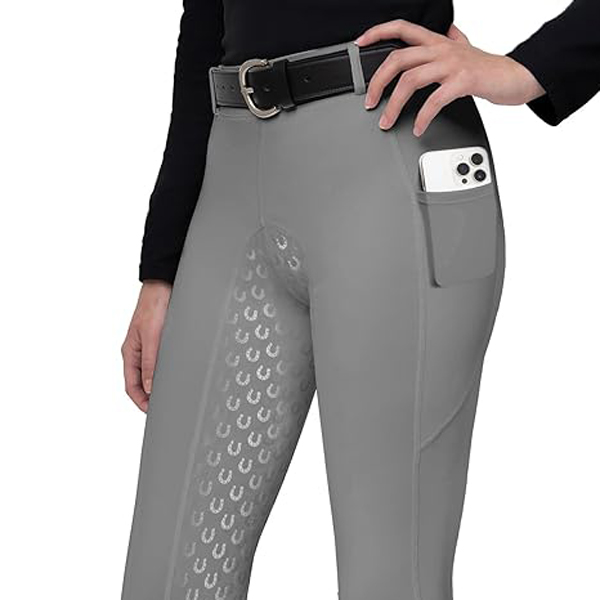
Premium women's riding breeches with technical fabrics
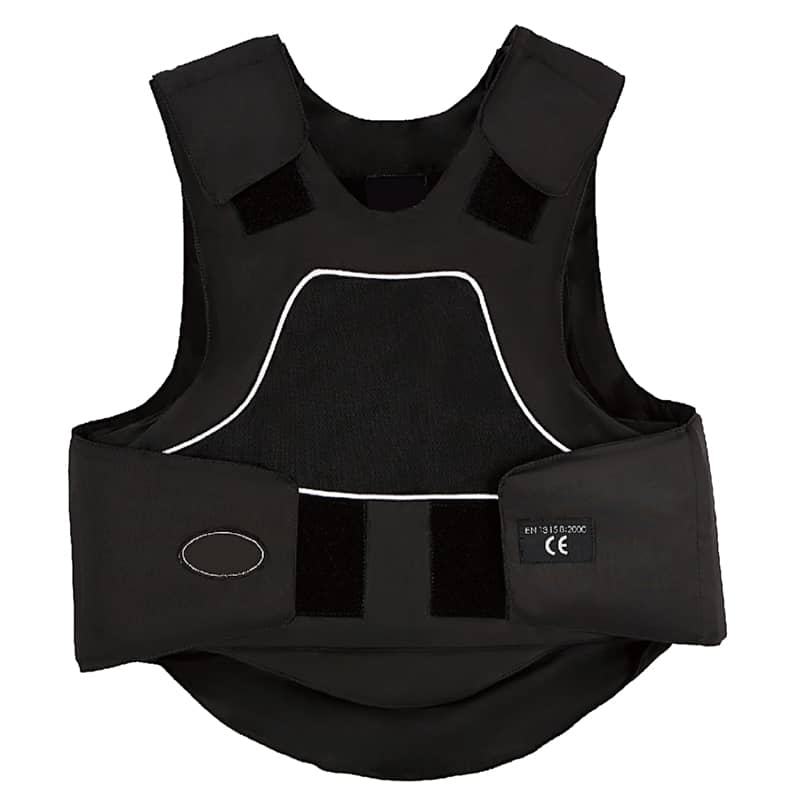
Safety-certified body protectors for competition

Custom saddle pads with advanced materials
Understand the 3 Manufacturer Types
OEM (Original Equipment Manufacturer) - When Volume Matters
OEM manufacturers are perfect when you need large quantities of existing designs. They specialize in producing standardized products efficiently and cost-effectively. However, customization options are usually limited to basic branding elements like logos and colors.
Choose OEM when you're launching established product lines like basic bell boots or standard riding gloves. The trade-off is higher minimum order quantities, typically 500-2,000 pieces per style.
ODM (Original Design Manufacturer) - The Sweet Spot for Most Brands
ODM manufacturers offer the best balance of customization and efficiency. They can modify existing designs or create new ones based on your specifications. This approach works well for brands wanting unique products without starting from scratch.
Many successful equestrian brands use ODM services to create signature collections. You get design input while leveraging the manufacturer's expertise and existing capabilities.
Innovation Insight: Advanced materials like carbon fiber and smart fabrics are reshaping equestrian apparel and gear manufacturing. Additionally, customization is rising to meet niche performance and sustainability demands in the modern market.
Custom/ETO (Engineer-to-Order) - For Premium Specialized Products
Custom manufacturers excel at creating completely unique products from scratch. They're ideal for innovative safety gear, specialized therapeutic equipment, or premium bespoke items. However, expect longer lead times of 18-26 weeks and higher per-unit costs.
Choose custom manufacturing when your product requires unique engineering, like specialized therapeutic horse care products or innovative rider safety systems.
The Non-Negotiable Quality Factors
Essential Safety Certifications You Must Verify
Safety certifications aren't optional in the equestrian industry—they're mandatory. Different product categories require specific certifications, and working with manufacturers who understand these requirements is crucial.
Key certifications include:
- ISO 9001: Basic quality management system certification
- ASTM F1163: Required for riding helmets in North America
- EN 13158: European standard for body protectors
- CE Marking: Mandatory for safety products sold in Europe
Always request documentation proving these certifications. Furthermore, ensure your manufacturer maintains current certifications and can provide updated certificates when needed.
Red Flags to Avoid in Quality Control
Some warning signs indicate potential quality problems before they become costly mistakes. Be cautious of manufacturers who can't provide detailed inspection reports, refuse factory visits, or seem unclear about safety standards.
Other red flags include:
- Unwillingness to provide references from existing clients
- No documented quality control processes
- Prices significantly below market averages
- Poor communication or delayed responses
How to Verify Manufacturer Claims
Don't just take manufacturers' word about their capabilities. Request detailed inspection reports covering raw materials, in-process checks, and final audits. Moreover, ask for third-party verification through independent testing labs.
The best manufacturers will proudly share their quality control processes and welcome your questions about their standards. They understand that your brand reputation depends on their manufacturing quality.
"Technological advancements in design and sustainability open new opportunities for market expansion and brand differentiation," notes Technavio's AI-driven market analysis (2024).
The Real Cost Breakdown
Understanding Total Cost Calculator Approach
Manufacturing costs extend far beyond the per-unit price. Smart brands calculate total delivered costs including all hidden expenses that can significantly impact profitability.
A complete cost analysis includes:
- Base manufacturing cost per unit
- Tooling and setup fees for new products
- Sample development costs
- Quality control and inspection fees
- Packaging and labeling costs
- Shipping and logistics expenses
- Import duties and taxes
- Currency fluctuation buffers
Hidden Costs Most Brands Miss
Many new brands underestimate additional costs that emerge during production. Sample revisions can add weeks and hundreds of dollars to your timeline. Additionally, rush orders often carry 15-30% premium charges.
Other commonly overlooked costs include:
- Design revision fees after initial approval
- Storage costs for delayed shipments
- Quality control failures requiring reproduction
- Minimum order quantity penalties for mixed sizes
ROI Timeline Expectations
Equestrian products typically have longer development cycles than other apparel categories. Plan for 6-12 months from initial concept to market-ready inventory. However, successful products often generate returns for multiple seasons.
Consider working with manufacturers who offer material sourcing services to streamline your supply chain and reduce overall costs.
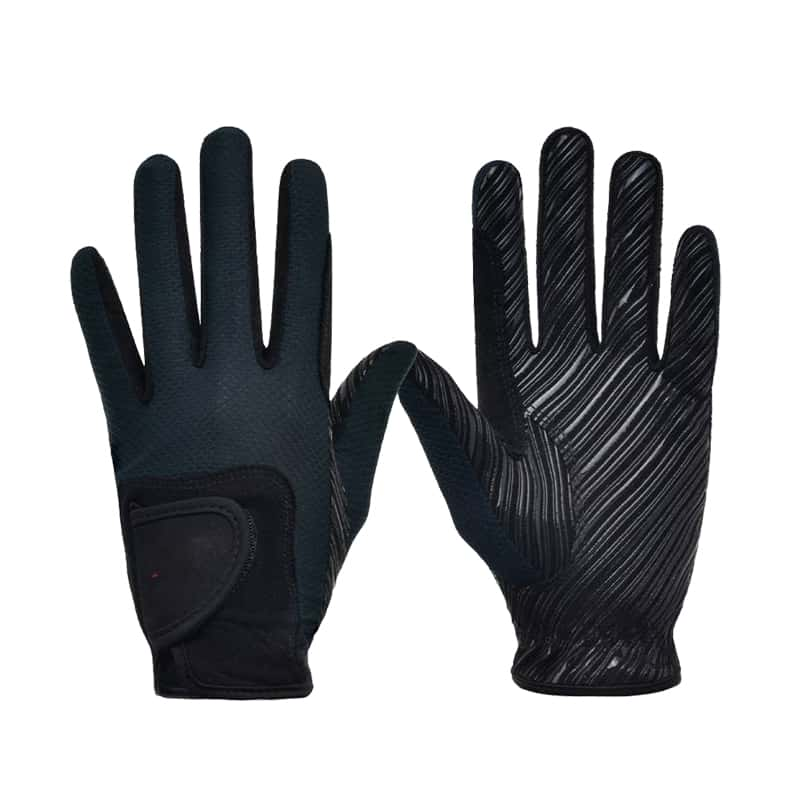
Professional competition gloves with grip technology
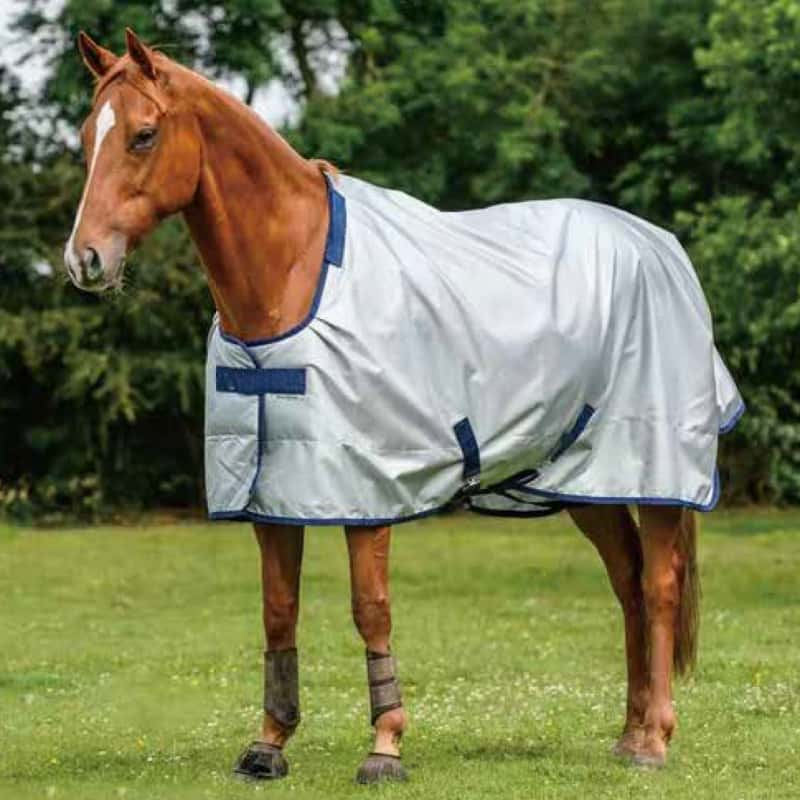
Weather-resistant horse rugs for all seasons

Breathable fly masks with UV protection
Getting Your Timeline Right
Seasonal Planning Backwards from Launch
The equestrian industry follows predictable seasonal patterns that directly impact your manufacturing timeline. Competition season typically runs from March through October in most regions, while winter months focus on training and preparation.
Plan your manufacturing schedule by working backward from these key dates:
- Spring Launch (March): Start manufacturing by November of the previous year
- Summer Peak (June-July): Begin production in January-February
- Fall Competition Season: Manufacturing should start in April-May
- Holiday Shopping: Production must begin by July for December availability
Remember that popular manufacturers often have fully booked production slots months in advance. Therefore, establishing relationships early gives you priority access to optimal manufacturing windows.
Buffer Time for Problems
Even the best manufacturers occasionally face delays due to material shortages, weather disruptions, or quality issues. Smart brands build 2-4 weeks of buffer time into their production schedules.
Common delays include:
- Raw material delivery delays from suppliers
- Quality control issues requiring reproduction
- Shipping delays during peak seasons
- Customs clearance complications
Expert Insight: Personalized rider and horse protection products—such as anatomically contoured saddle pads and biomechanical safety gear—are emerging as key differentiators for OEM/ODM manufacturers in the competitive landscape.
How to Negotiate Faster Turnarounds
When time is critical, experienced manufacturers can often accommodate rush orders for premium pricing. However, the key is building relationships before you need emergency services.
Strategies for faster production include:
- Choosing existing designs with minor modifications
- Using readily available materials instead of custom fabrics
- Accepting higher minimum order quantities for priority scheduling
- Working with manufacturers who offer rapid sampling services
Smart Questions to Ask Before Signing
Conversation Starters That Reveal Manufacturer Capabilities
The right questions help you understand not just what manufacturers can do, but how they work. Furthermore, their responses reveal their experience level and commitment to quality partnerships.
Start with these essential questions:
- "Can you walk me through your typical project timeline from sample to delivery?"
- "What's your process for handling design revisions or quality issues?"
- "How do you ensure consistent quality across large production runs?"
- "What certifications do you maintain, and can you provide documentation?"
Pay attention to how detailed and confident their answers are. Experienced manufacturers will provide specific processes and examples from similar projects.
Deal-Breaker Questions About Communication and Support
Communication problems cause more project failures than manufacturing issues. Therefore, establish clear expectations about responsiveness and project updates from the beginning.
Critical communication questions include:
- "What's your typical response time for emails and project updates?"
- "Who will be my main point of contact throughout the project?"
- "How do you handle time zone differences for international clients?"
- "What happens if problems arise during production?"
Look for manufacturers who proactively communicate and have dedicated account management systems. Moreover, they should be able to provide references from clients in similar time zones or regions.
"Clearly define your product needs—item types (e.g., breeches, leggings, waterproofs), intended use (competition, leisure, training), and quality vs. budget balance—before reaching out to potential manufacturers."
Why Location Matters More Than You Think
Regional Manufacturing Advantages
Different manufacturing regions offer distinct advantages depending on your specific needs. Asia provides cost efficiency and large-scale capabilities, while European manufacturers often excel in technical innovation and premium materials.
| Region | Best For | Typical Lead Time | Cost Level |
|---|---|---|---|
| Asia-Pacific | High-volume production, cost efficiency | 12-16 weeks | Low-Medium |
| Europe | Premium materials, innovation | 8-12 weeks | High |
| Noord-Amerika | Quick turnarounds, customization | 6-10 weeks | Medium-High |
Shipping and Duty Considerations
Shipping costs and import duties can significantly impact your total product costs. Ocean freight is most economical for large orders but requires longer transit times. Air freight offers speed but costs 3-5 times more.
Consider these logistics factors:
- Ocean shipping: 2-6 weeks transit time, lowest cost per unit
- Air freight: 3-7 days transit, highest cost but fastest delivery
- Express shipping: 1-3 days, premium pricing for urgent orders
- Import duties: Vary by product category and country of origin
Working with manufacturers who provide comprehensive shipping solutions can simplify logistics and reduce your administrative burden.
Time Zone and Communication Impacts
Time zone differences affect project timelines more than most brands realize. A 12-hour time difference can effectively double response times for urgent questions or approvals.
Strategies for managing time zones include:
- Scheduling regular check-in calls at mutually convenient times
- Establishing clear escalation procedures for urgent issues
- Using project management platforms for asynchronous communication
- Building extra time into schedules for international coordination
Sustainability as a Competitive Advantage
Consumer Demand Trends
Modern equestrian consumers increasingly prioritize environmental responsibility. The sustainable equestrian apparel market is growing at 5.5% annually, driven by conscious purchasing decisions and corporate responsibility initiatives.
Key sustainability trends include:
- Recycled polyester and organic cotton fabrics
- Water-based dyes and eco-friendly finishing processes
- Biodegradable packaging materials
- Carbon-neutral shipping options
Brands that prioritize sustainable manufacturing often command premium pricing and build stronger customer loyalty.
Easy Wins for Eco-Friendly Manufacturing
You don't need to revolutionize your entire product line to improve sustainability. Simple changes can significantly reduce environmental impact while appealing to conscious consumers.
Quick sustainability improvements include:
- Choosing OEKO-Tex certified fabrics
- Selecting manufacturers with renewable energy programs
- Implementing recycled packaging materials
- Reducing overproduction through better demand forecasting
Sustainability Insight: According to industry reports, brands using eco-friendly materials and production methods see 15-25% higher customer retention rates compared to conventional alternatives. This trend is particularly strong among younger equestrian enthusiasts.
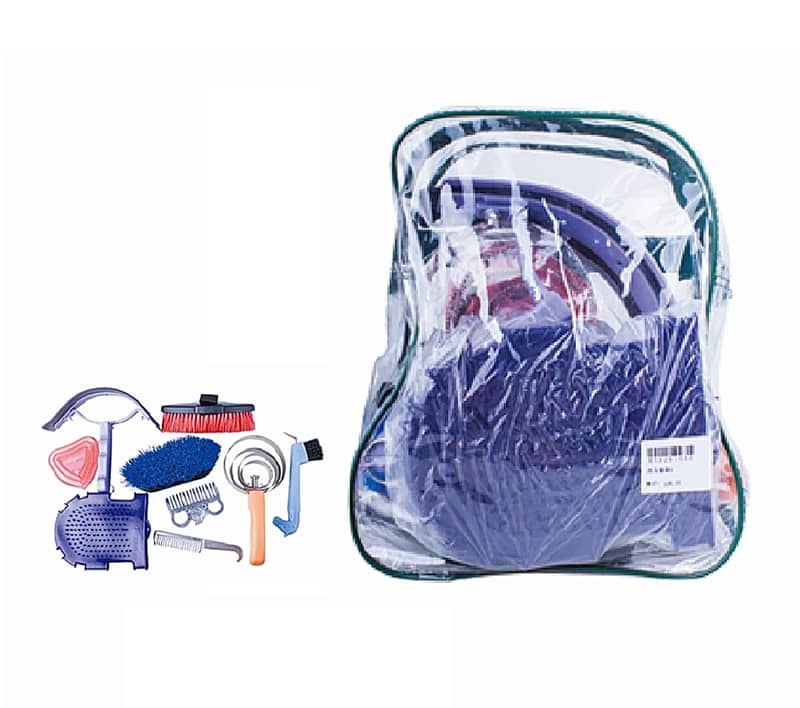
Eco-friendly horse grooming kits with sustainable materials

Safe, comfortable children's equestrian apparel

Durable PVC headcollars for daily use
Red Flags vs Green Flags Checklist
Warning Signs to Avoid
Recognizing red flags early can save you from costly mistakes and project failures. These warning signs often indicate deeper problems with manufacturer capabilities or business practices.
Critical Red Flags:
- ❌ Unwillingness to provide references or portfolio examples
- ❌ Significantly below-market pricing without clear explanations
- ❌ Poor communication or delayed responses to inquiries
- ❌ No documented quality control processes or certifications
- ❌ Pressure to sign contracts without adequate sample review
- ❌ Inability to explain their production processes clearly
- ❌ No backup plans for material shortages or production delays
Positive Indicators of Reliable Partners
Experienced manufacturers demonstrate professionalism and expertise through consistent behaviors and transparent processes. Look for these positive signs when evaluating potential partners.
Green Flags to Look For:
- ✅ Detailed project proposals with clear timelines and costs
- ✅ Proactive communication about potential challenges or delays
- ✅ Willingness to provide factory tours or video calls
- ✅ Current safety certifications and quality documentation
- ✅ Flexible minimum order quantities for new partnerships
- ✅ Comprehensive additional services beyond basic manufacturing
- ✅ Strong references from similar brands or product categories
"Evaluate communication and customer service: responsiveness, product knowledge, and clarity on after-sales support or warranties are crucial factors that separate excellent manufacturers from average ones."
Making Your Final Decision
Scoring System for Comparing Candidates
When you're down to 2-3 potential manufacturers, a systematic scoring approach helps eliminate emotion from your decision. Rate each candidate on key factors using a 1-10 scale.
Scoring Categories (Weight Each Factor):
- Quality & Certifications (25%): Safety standards, quality control processes
- Cost & Value (20%): Total delivered cost, payment terms, value for money
- Communication (15%): Responsiveness, clarity, project management
- Capacity & Reliability (15%): Production capability, on-time delivery history
- Innovation & Services (10%): Design capability, additional services offered
- Sustainability (10%): Environmental practices, material sourcing
- Geographic Fit (5%): Time zones, logistics, cultural alignment
Contract Essentials in Plain English
A good manufacturing contract protects both parties and establishes clear expectations. Don't let legal complexity prevent you from understanding key terms that affect your business.
Essential contract elements include:
- Product Specifications: Detailed descriptions, materials, quality standards
- Delivery Terms: Timeline, shipping method, delivery location
- Payment Terms: Deposit requirements, milestone payments, final payment
- Quality Standards: Acceptance criteria, inspection procedures, defect handling
- Intellectual Property: Design ownership, confidentiality agreements
- Force Majeure: How to handle unexpected delays or disruptions
Consider working with manufacturers who offer transparent private label manufacturing agreements that clearly define ownership and usage rights for your designs.
Final Due Diligence Steps
Before signing any agreement, complete these final verification steps to ensure you're making the right choice:
- Conduct reference calls with at least 2-3 current clients
- Request and thoroughly test product samples under real-world conditions
- Verify all certifications and insurance documentation
- Confirm financial stability through business credit reports
- Schedule a final video call or factory visit if possible
Remember that choosing a manufacturer is the beginning of a long-term relationship. The extra time invested in thorough evaluation pays dividends throughout your partnership.
Final Insight: According to industry experts, brands that invest adequate time in manufacturer selection see 40% fewer production issues and 25% better long-term profitability compared to those who rush the decision process.
Conclusion
Choosing the right equestrian manufacturer requires balancing multiple complex factors, from quality standards and cost considerations to timeline requirements and sustainability goals. The manufacturers you select will directly impact your product quality, brand reputation, and business profitability.
Success comes from taking a systematic approach: clearly defining your needs, thoroughly evaluating potential partners, asking the right questions, and making informed decisions based on data rather than assumptions. Furthermore, remember that the lowest price rarely delivers the best value when you factor in quality, reliability, and long-term partnership benefits.
The equestrian market's growth trajectory toward USD 3.8 billion by 2034 presents tremendous opportunities for brands that partner with the right manufacturers. However, this growth also means increased competition and higher customer expectations for product quality and innovation.
As you move forward with manufacturer selection, prioritize partners who demonstrate expertise in your specific product categories, maintain proper certifications, communicate effectively, and share your commitment to quality and sustainability. The time invested in making the right choice will pay dividends for years to come.
Ready to Find Your Ideal Manufacturing Partner?
At Zest Equestrian, we specialize in helping brands like yours navigate the complex world of equestrian manufacturing. Our comprehensive services include everything from initial design consultation to final product delivery.
Whether you need OEM/ODM services, custom product development, or guidance on quality control standards, our experienced team is ready to support your success.
Get started today with a free consultation.
External Resources and References
For additional research and industry insights, consider these authoritative sources:
- ASTM International - F1163 Standard Specification for Protective Headgear
- ISO 9001 Quality Management Systems
- OEKO-TEX Standards for Textile Testing
- Bluesign Sustainable Textile Production
- US Department of Commerce - International Trade Guidelines
- Grand View Research - Equestrian Equipment Market Analysis
- Technavio Market Research - Equestrian Apparel Trends
- McKinsey & Company - Sustainable Fashion Industry Report
This comprehensive guide provides the foundation for making informed manufacturer selection decisions. Remember that each brand's needs are unique, and the best choice depends on your specific requirements, budget, and long-term business goals.
About the Author: This guide was developed by the manufacturing experts at Zest Equestrian, drawing from over a decade of experience in equestrian product development and manufacturing partnerships. For more insights and resources, visit our manufacturing blog.

